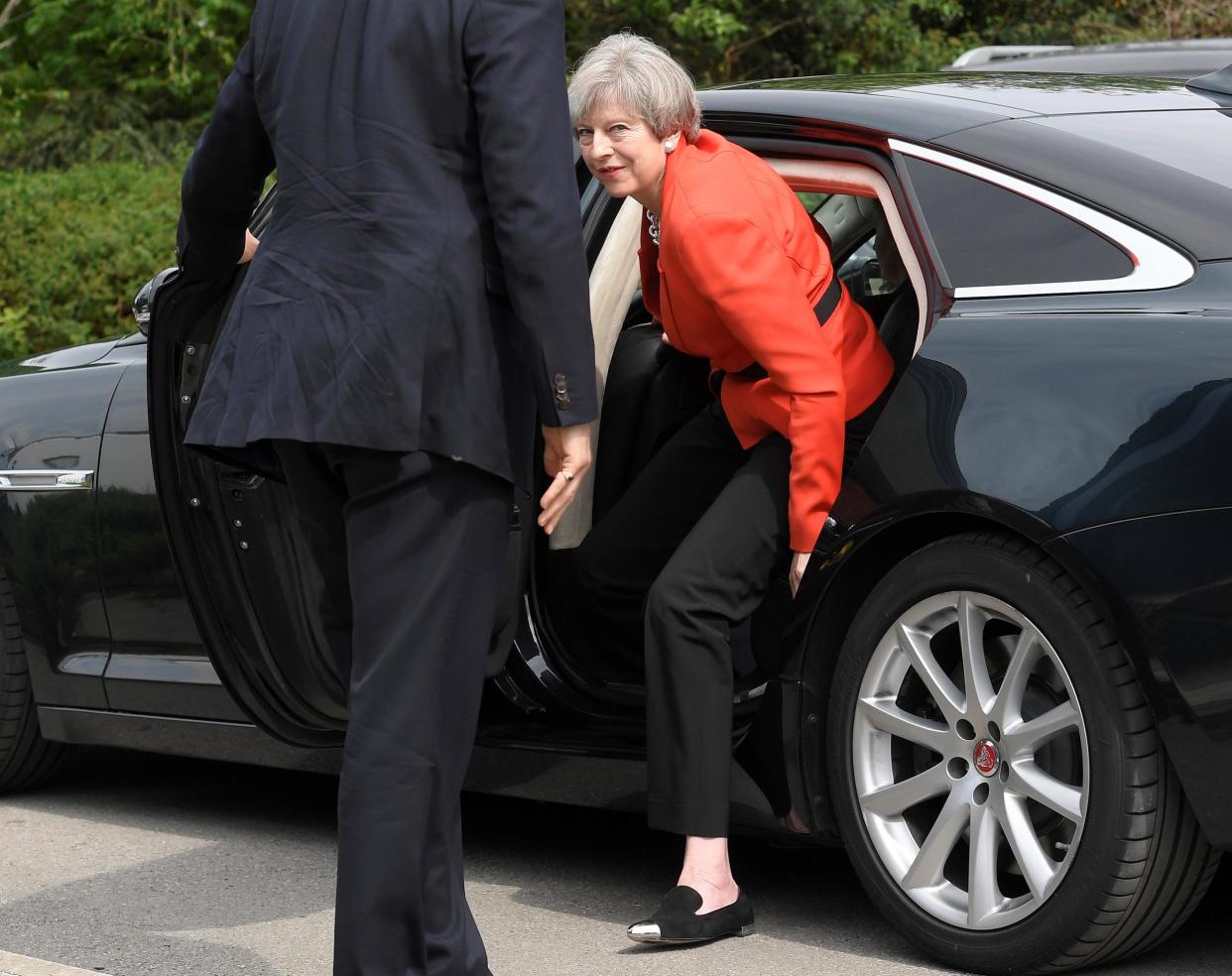Theresa May's campaign is a modern interpretation of the Emperor's New Clothes

It is occasionally whispered of our Prime Minister that her overtly public fascination with clothing is an act of political calculation. You don’t need to be a genius to realise image matters in politics, and you don’t need to be a genius to realise that if you take a dour, home counties vicar’s daughter out of her £1,000 chocolate leather trousers, you are left with a dour home counties vicar’s daughter.
Whether or not this is true, I confess I do not know, but there can be no doubt that in the decade leading up to 2010, the public spotlight shone rather more brightly upon her that it might have done in more reliable footwear.
Of course, there are many men and women who spend £1,000 on a pair of trousers. There are many men and women who might choose a lifetime subscription to Vogue as their luxury item on Desert Island Discs (as Theresa May did). But if you were compelled to draw a Venn diagram of such people, with the other half being those who have gone on the same walking holiday in Switzerland every year for the past two decades, you might find the central area encircling no one other than our current Prime Minister.
The question is whether or not the now full beam of the public spotlight should be sufficient to expose that there might not be anything underneath. If the Empress is wearing Vivienne Westwood, it is all the harder for anyone to spot there might not be anything there.
Thus far no one appears even capable of registering the mildly outrageous hypocrisy of a woman launching an election manifesto and opining on “life in Britain today being much harder than many people seem to think or realise” whilst rocking £3,000 worth of navy two piece. This is the same line, by the way, she had first made on the steps of Number 10 Downing Street, standing two yards in front of her fund manager husband.
For some reason, this is considered an antidote to Bullingdon Britain. I am yet to understand why.
And so we turn to the Conservative Party Manifesto. “There is no such thing as Mayism,” she said on Thursday with her trademark brittle anger, in response to a question on the subject of her own political ideology. Nothing appears to disgust her more than the idea there might in fact be any ideological substance there, a reality made all the more curious given the lengthy paragraphs in the manifesto itself dedicated to the “principles” that we must assume will inform her leadership. A rejection of “selfish individualism” and “untrammeled free markets.” Now, we are told: “Our responsibility to one another is greater than the rights we hold as individuals.”
No, this skin-deep rejection of ideology is not actually the rejection of ideas, but merely the device through which not to cede control. The problem for Theresa May is that ideology is meant to be formed by dialectical process. It exists to be challenged. It cannot be handed down from on high, then centrally managed. Ideas don’t “just get on with the job.” Brexit can’t just mean Brexit.
Though it may be why she has presented a vision for Britain that is scarcely more than aspirational. At one point on Thursday, she tore into Jeremy Corbyn for manifesto costings “that are not worth the paper they’re printed on” even though she produced no such costings herself.
She remains committed to reducing immigration to the “tens of thousands” even though she herself personally failed to do that very thing in six long years at the Home Office. During this time, the far greater share of the roughly 300,000 net figure is for non-EU migrants, for which control does not need to be taken back as it has never been lost. At some point, she will have to accept the view of every analyst and economist in the land: that the UK’s ageing population cannot be sustained without saying yes to large numbers of working age immigrants happy to boost the national coffers.
Her heavily pre-briefed energy price cap was noticeably absent from the manifesto itself, which merely promised a “review” of the matter.
The one major substantially explained policy – the so-called “dementia tax” – is particularly intriguing. Good for her, perhaps for taking this chance, in an election she cannot realistically lose, to compel elderly people who can afford it to spend some of their unearned property price inflation wealth on social care, should they require it. But this is a big policy, with consequences that will last for years. The Conservatives will not always be facing elections they cannot lose. The test will be to see how long this policy lasts. Even now, she is beginning to water it down by introducing a price cap to make it more palatable. Labour should have, from an ideological perspective, supported it. But there will be much political capital to be gained, in an increasingly gerontocratic Britain, in pledging to get rid of it.
And on her main overarching pledge that a Conservative landslide will “strengthen her hand in negotiation”, until a mutually acceptable divorce settlement can be found there will be no negotiation. Yesterday David Davis remarked that “even £1bn is a lot.” Brussels still talks of £100bn. Though no one in Britain listens, Brussels has made clear that European countries do not want to pay more to cover the hole left by Britain. If they are made to do so, there will almost certainly be no deal.
You can deal someone all the aces in the pack, but there may yet be no card game at all. For five full years come 9 June, don’t be surprised by the growing realisation that, while clothed in high fashion, the Empress was naked all along.

 Yahoo News
Yahoo News 